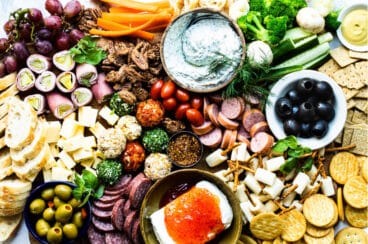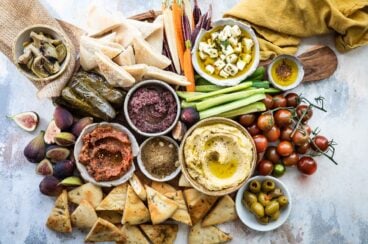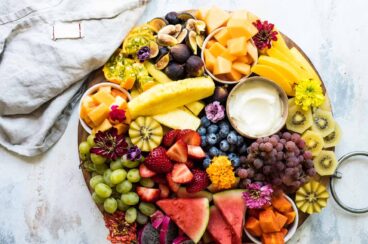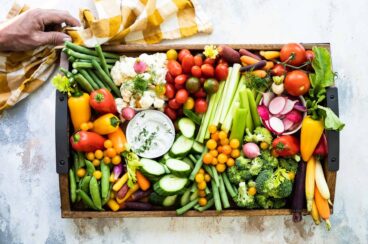This post may contain affiliate links. For more information, please see our affiliate policy.
Learn how to build a charcuterie board for the ultimate snack dinner or party appetizer. My charcuterie board guide will coach you through how much meat and cheese to buy per person, how to assemble the most beautiful board, and the accessories you may want to add to fill in the gaps and add a flavor boost.
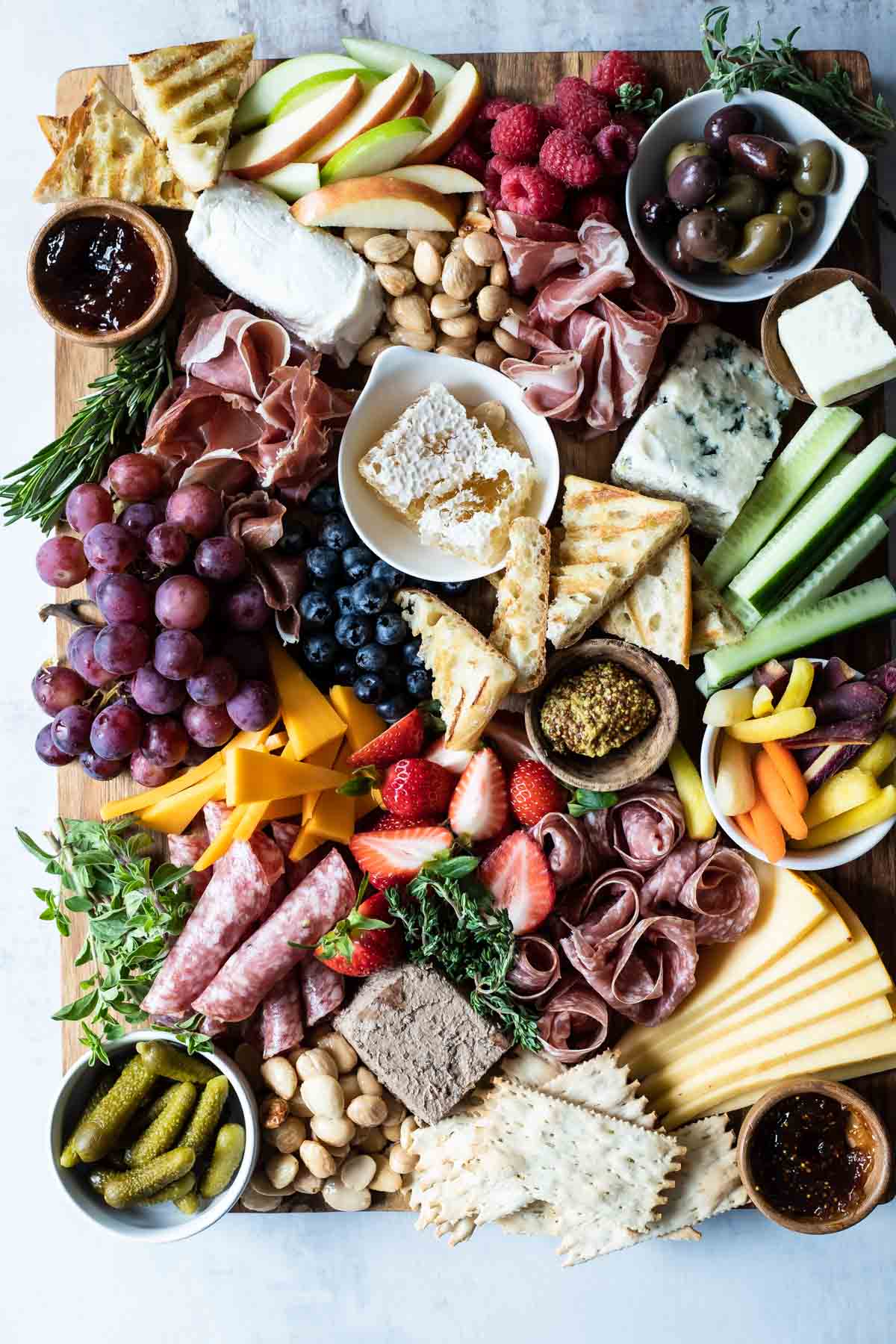
Perhaps you’ve seen pancake charcuterie boards, hot cocoa charcuterie boards, cheese boards, and slider charcuterie boards? Charcuterie (shahr-koo-tuh-ree) is actually the term that refers to the cured meats that grace the original snack platters. Those meats have been served in France since at least the 15th century, but the board concept has boomed in popularity in the last social media-fueled decade.
Today, “charcuterie” has expanded to have a new alternative definition as a shareable spread that allows anyone to BYOB (build your own bite, of course).
The concept is quite a savvy way to feed a crowd since you can customize each creation to account for:
- The size of the crowd
- Different dietary needs and preferences
- The theme of the gathering
- Your budget
After sharing my beloved Midwest Charcuterie Board that features a bounty of regional favorites, we’re going back to basics with a classic Charcuterie Board of meats, cheeses, and accessories. Scale up or scale down as desired, and feel free to get creative with your ingredients and food styling in the art of preparing this piece. The board is your blank canvas to design as you desire!
Table of Contents
Recipe ingredients
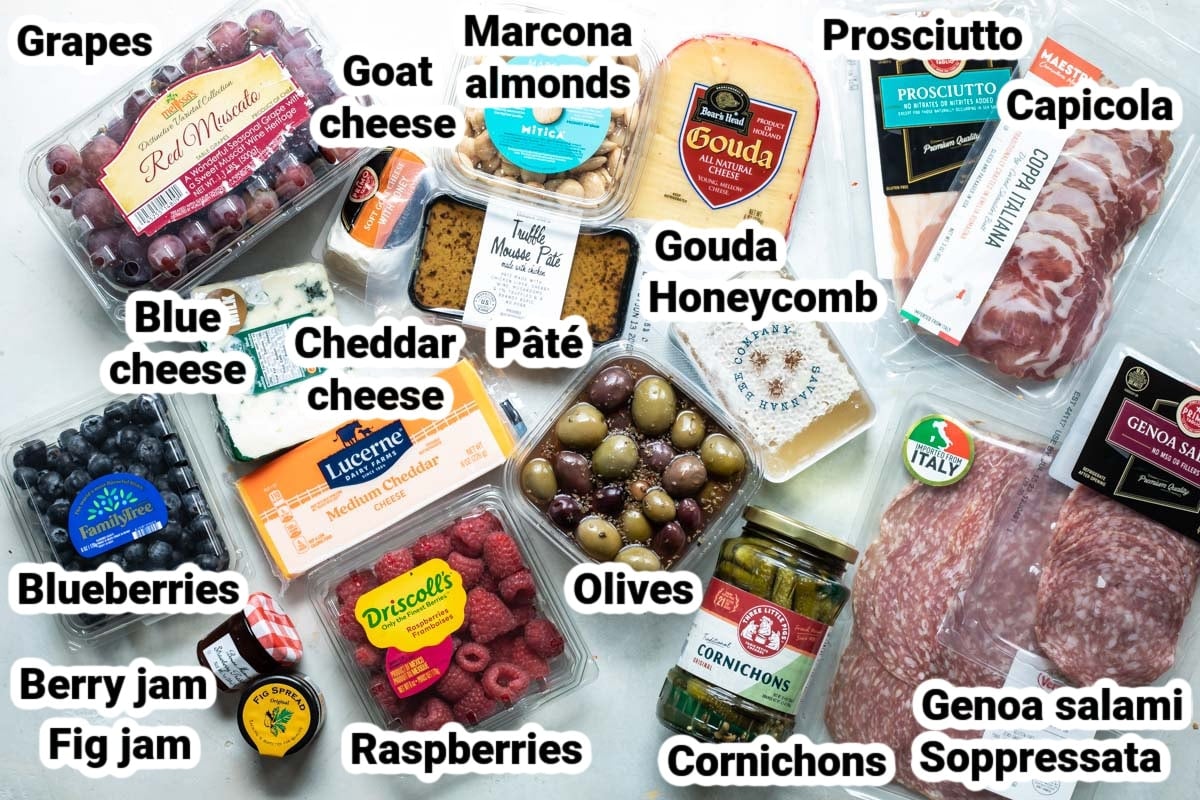
At a Glance: Here is a quick snapshot of what ingredients are in this recipe.
Please see the recipe card below for specific quantities.
Equipment notes
- Boards and platters: Wood, marble, slate; any flat, food-safe surface can act as a blank canvas for your Charcuterie Board. If you’re not certain that the surface is safe to serve food or easy to clean, line it with parchment paper.
- Dishes: Small bowls and cups can keep dips, jams, olives, and other ingredients that might roll or drip from invading the space of the other ingredients.
- Serving tools: Cheese knives, appetizer forks, small tongs, toothpicks, and tiny spoons ensure that the board stays as sanitary as possible and guarantee that guests can snag the items they like easily. No need to worry about investing in a matching set; a mix-and-match look can be stylish, too.
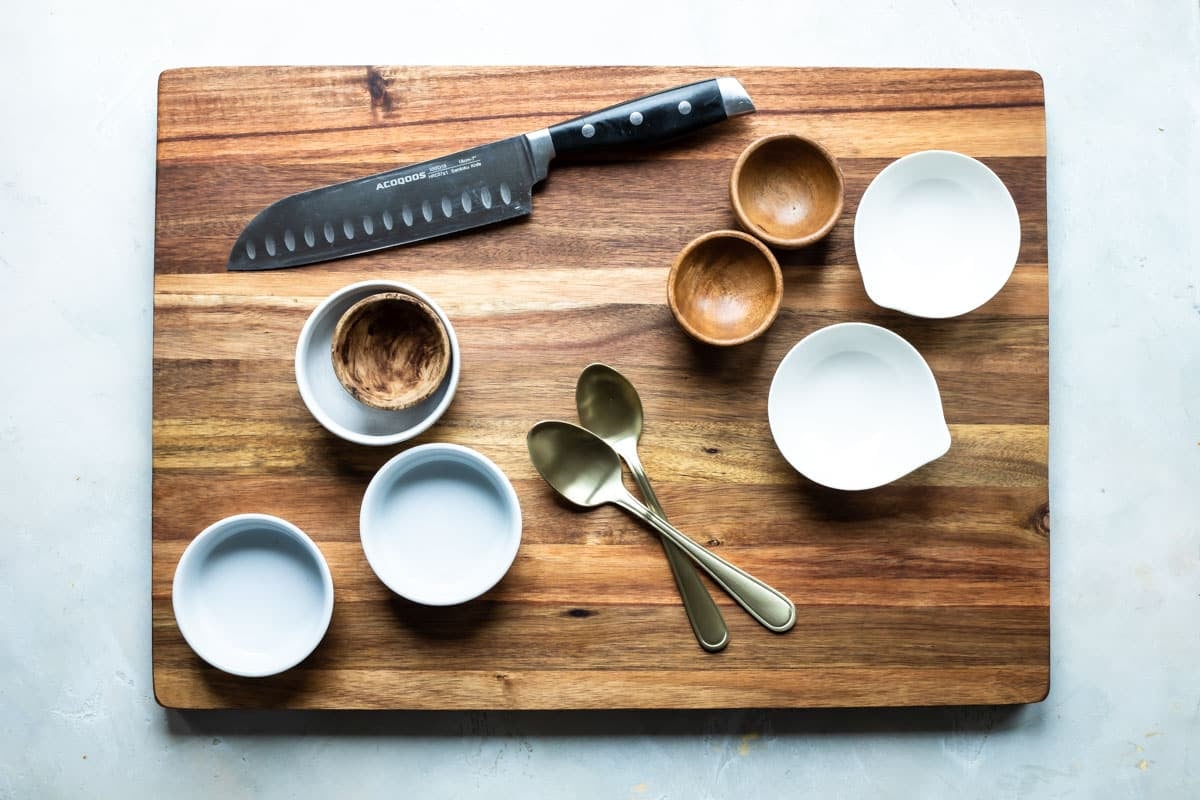
Ingredient notes
- Meats: The overall goal with your Charcuterie Board is to offer enough diversity that everyone can find something they enjoy; and perhaps discover a new favorite, too. I like to showcase four total, including smoked sausages and salamis, dry-cured pork or beef, and spreadable meat. This list below can offer some inspiration.
- Dry-Cured Pork or Beef: Serrano ham, prosciutto, country ham, Iberico ham, capicola, speck, bresaola
- Salami: Genoa, soppressata, finocchiona, Genoa
- Spreadable meat: ‘Nduja, duck pâté, chicken liver pâté, rillettes
- Cheeses: I like to feature four different varieties of cheese on a Charcuterie Board. You’re free to choose your own adventure, of course, but I like to select one from each of the categories bulleted below, then a bonus item. Try to think of cheeses that might complement each of your meats.
- Soft: Brie, feta, Camembert, burrata, chèvre, ricotta
- Semi-soft: Fontina, muenster, Gouda, Havarti, Roquefort, gorgonzola, Manchego, Gruyère, Comté
- Firm: Cheddar, Parmesan, Romano
- Carbs: Crackers, Toasted Baguette slices, Pita Chips, or pretzels are among my favorites. Stock up on more than you think you might need to build the base board so you can refill the board throughout the gathering.
- Fruit and vegetables: I like to wander the produce aisle to see what looks fresh, ripe, and ready. In addition to at least one form of dried fruit, I usually end up highlighting fresh fruits, like blueberries, raspberries, strawberries, cherries, grapes, and apples or pears. If you opt to layer in the latter two, toss them with lemon juice before assembly to slow the oxidation process that causes the flesh to brown. Carrot sticks, cucumber slices, and mini bell pepper halves are lovely to layer in other nutritious, refreshing elements, and can act as great vehicles for dips or soft cheeses.
- Jams, mustards, and other flavor-boosters: Any form of fruit preserves/jams/jellies, honey, mustards, nuts, olives, cornichons, chocolate or other sweets, and fresh herbs can round out the board’s real estate.
Step-by-step instructions
- Select your board, then gather your meats. Imagine your board as having four quadrants, and position one type of meat in the middle of each of those four portions.
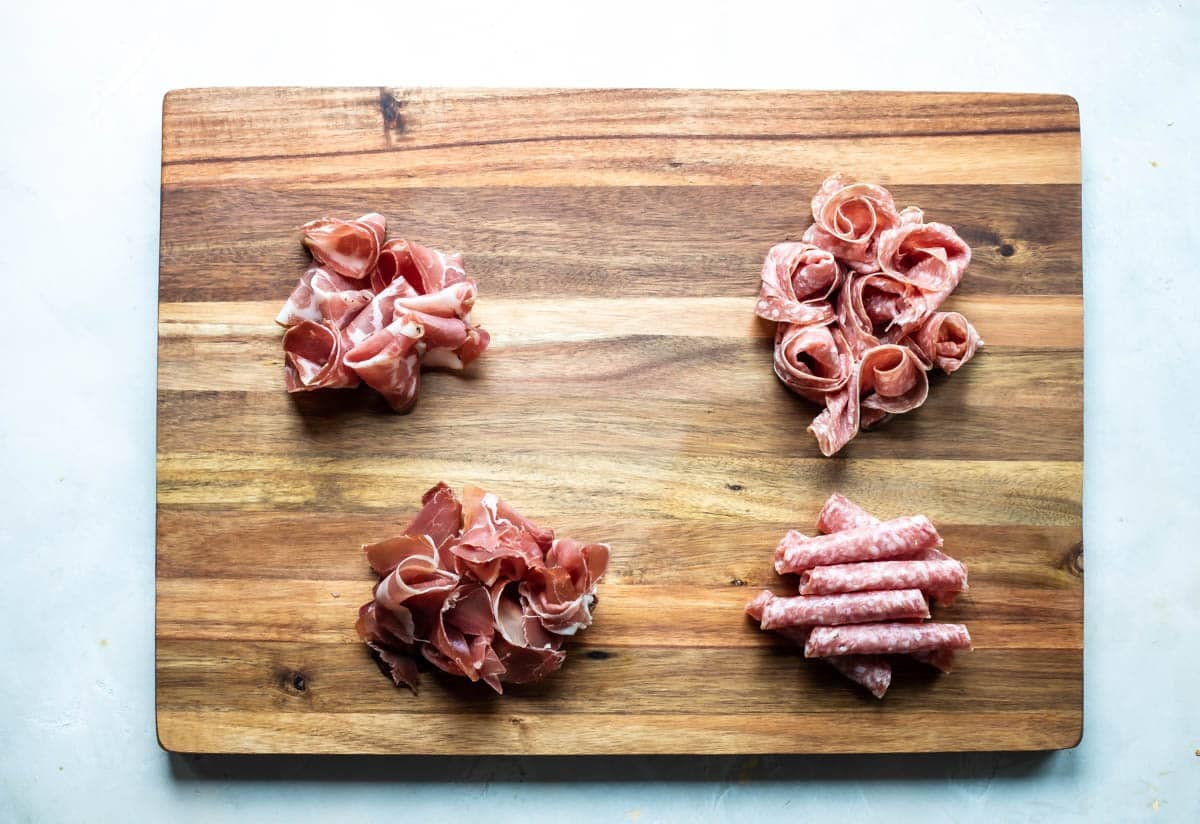
- Next, the cheeses; position the cheese you’d suggest as a pairing for each meat next two it in the quadrant.
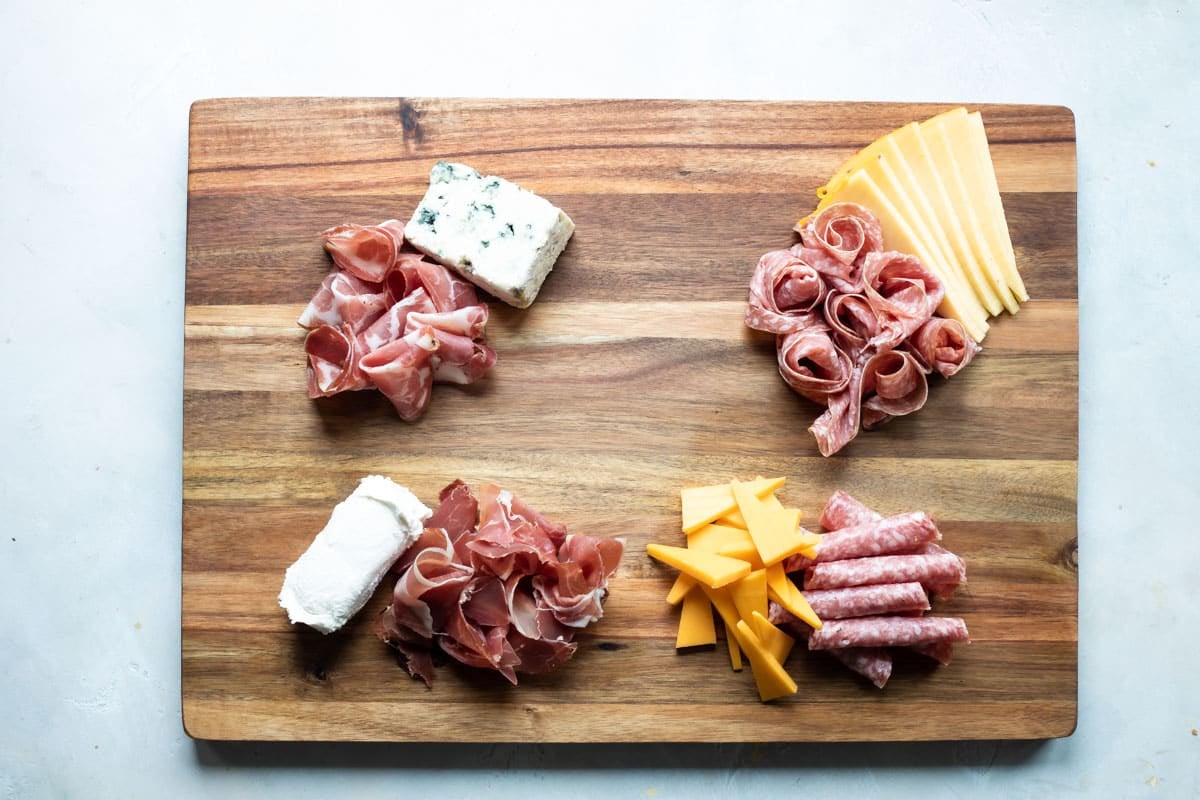
- Using small dishes, bowls or cups of jams, mustards, cherries, and/or olives, fill in the larger holes.
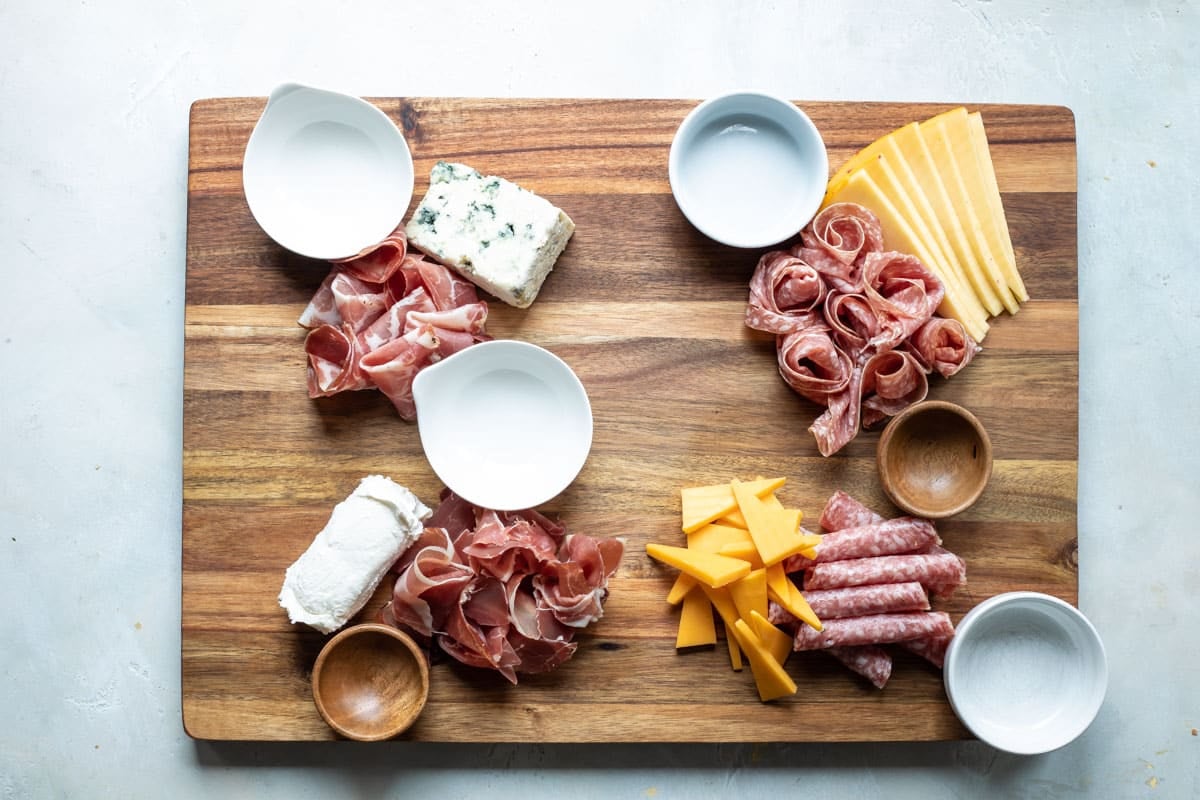
- Then using your desired fruits, nuts, crackers, toasted baguette slices, and other ingredients, fill in the gaps. Layer and overlap when needed; step back to view the board from afar to spot any slim spots. Garnish with herbs like rosemary or thyme, and tuck in forks, spreaders, tongs, and other utensils where needed.
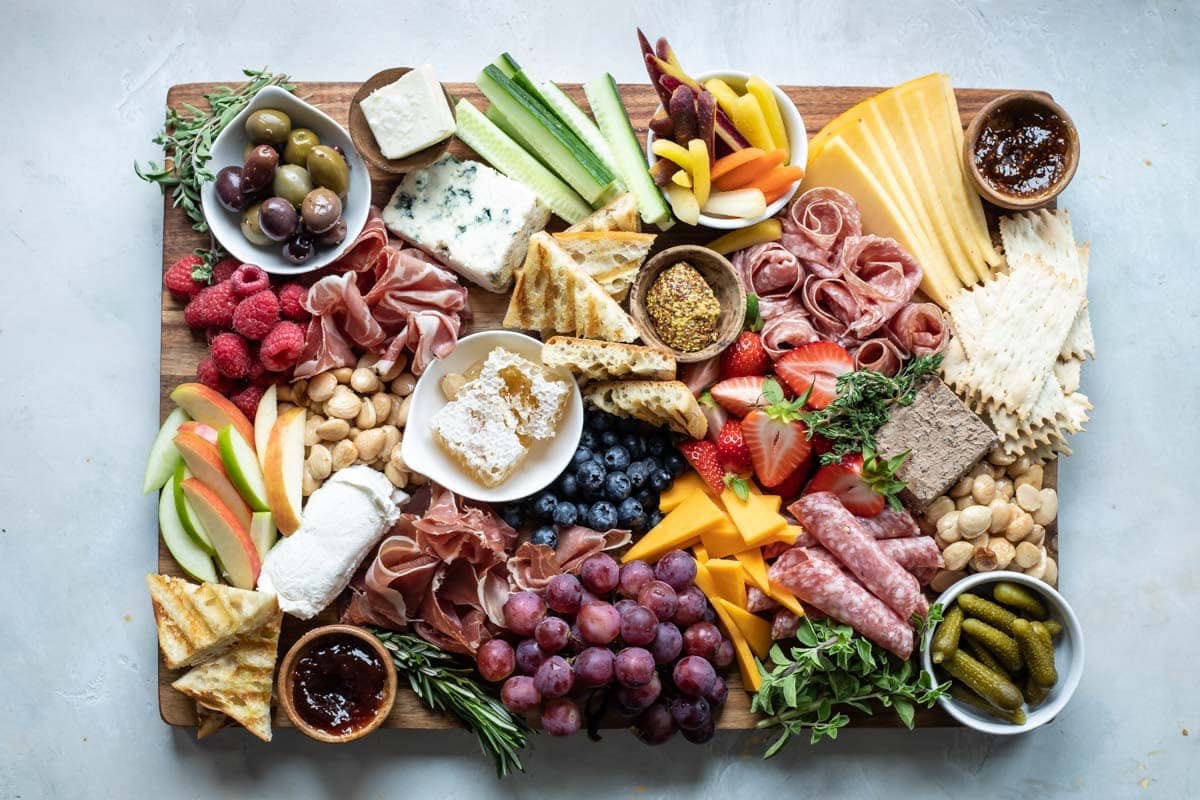
Recipe tips and variations
- Yield: Your yield will vary depending on how much you buy which is determined by how many you are feeding. I usually plan on 1 to 2 ounces each of meat and cheese per person. If the Charcuterie Board is standing alone as the main event, I am more generous and estimate 4 ounces of meat and cheese per person.
- Storage: Store leftovers covered in the refrigerator for up to 4 days.
- Make ahead: Assemble the full board, cover it with plastic wrap, and refrigerate up to one day in advance. Bring to room temperature right before the party starts.
- Midwestern heart: Try my Midwest Charcuterie Board for my favorite Wisconsin snacks like ham and pickle roll-ups, mini cheese balls, venison sausage, dill dip, and red pepper jelly with cream cheese. Try my classic Cheese Board, my Christmas Charcuterie Board, or my Valentine’s Charcuterie Board for fun holiday twists.
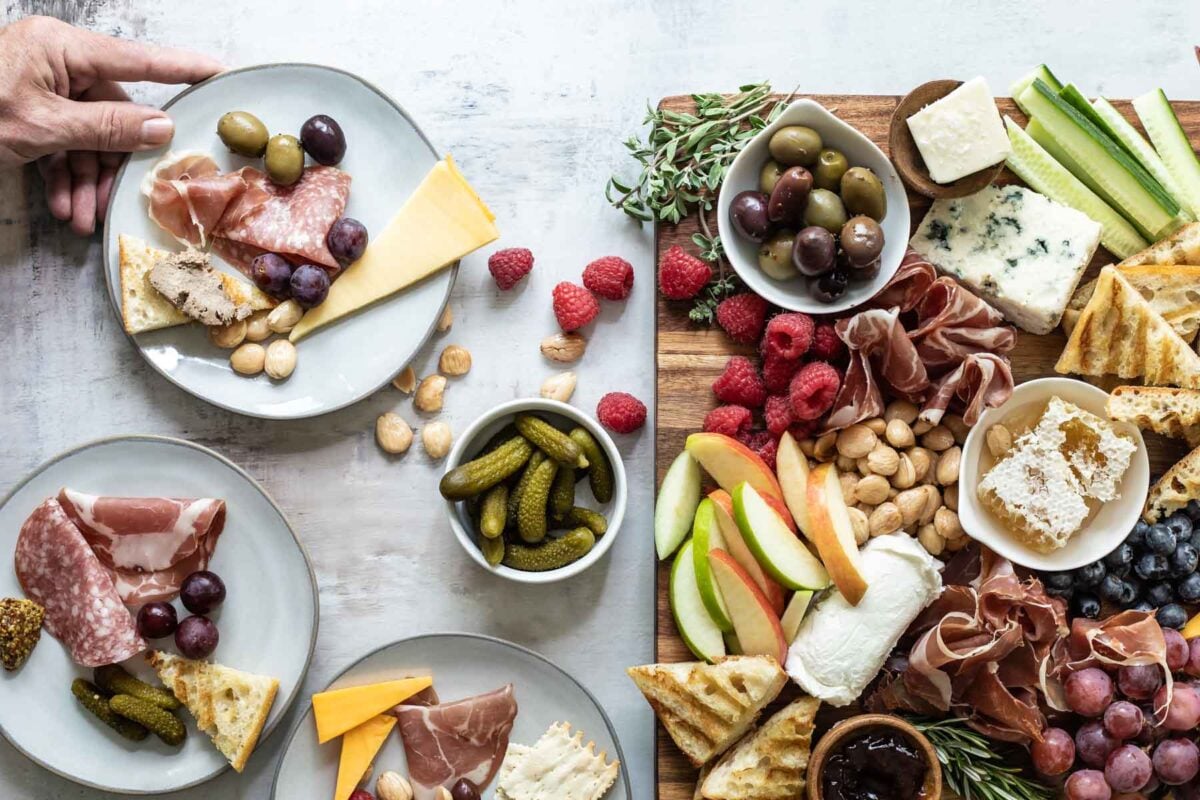
Recipe FAQs
This depends on your budget, the appetites of you and your guests, as well as the other items you’re serving (if any). I usually plan on 1 to 2 ounces each of meat and cheese per person. If the Charcuterie Board is standing alone as a snack dinner, I err on the more generous side and estimate 4 ounces of meat and cheese per person each so no one leaves hungry.
Instead of just transferring cured meats from the package to the platter, try to highlight their textures and build dimension. But most importantly, you want the meat to be easy to access in reasonable portions. Consider rolling individual slices into spirals, forming salami roses, or creating prosciutto “rivers” in an “S” shape. Pinterest is a terrific source for inspiration.
More ways to graze
Entertaining
Midwest Charcuterie Board
Entertaining
Build the Ultimate Mezze Platter
Entertaining
Fruit Platter
Entertaining
Veggie Platter
Join Us
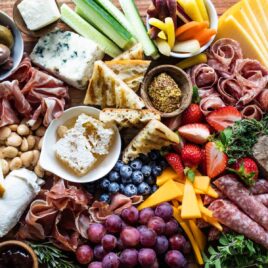
Charcuterie Board
Ingredients
The meats (see note 1):
- 8 ounces prosciutto or serrano ham
- 8 ounces capicola or bresaola
- 8 ounces soppressata or genoa salami
- 4 ounces duck pâté or chicken liver duck pâté
The cheese (see note 2):
- 1 (5 ounce) log chevre
- 1 (8 ounce) wedge Gouda or Fontina
- 1 (4 ounce) wedge Roquefort blue cheese
- 4 ounces Cheddar cheese
The spreads (see note 3):
- butter softened
- fresh honeycomb
- fig jam
- wholegrain mustard
The fillers (see notes 4 and 5):
- red grapes
- apple slices a mix of red and green (Gala apples brown the slowest)
- cherries or berries
- cucumbers sliced
- carrot slices heirloom if possible
- olives and cornichons
- pickles
- Marcona almonds or other nuts
- toasted baguette slices
- flatbread crackers or pretzels
The garnishes:
Instructions
- Select your board, then gather your meats. Imagine your board as having four quadrants, and position one type of meat in the middle of each of those four portions.
- Next, the cheeses; position the cheese you'd suggest as a pairing for each meat next two it in the quadrant.
- Using bowls or cups of jams, mustards, cherries, and/or olives, fill in the larger holes.
- Then using your desired fruits, nuts, crackers, toasted baguette slices and other ingredients, fill in the gaps. Layer and overlap when needed; step back to view the board from afar to spot any slim spots.
- Garnish with herbs, and tuck in forks, spreaders, tongs, and other utensils where needed.
Recipe Video
Notes
- Meats: The overall goal with your Charcuterie Board is to offer enough diversity that everyone can find something they enjoy; and perhaps discover a new favorite, too. I like to showcase four total, including smoked sausages and salamis, dry-cured pork or beef, and a spreadable meat. This list below can offer some inspiration.
- Dry-Cured Pork or Beef: Serrano ham, prosciutto, country ham, Iberico ham, capicola, speck, bresaola
- Salami: Genoa, soppressata, finocchiona, Genoa
- Spreadable meat: ‘Nduja, duck pâté, chicken liver pâté, rillettes
- Cheeses: I like to feature four different varieties of cheese on a Charcuterie Board. You’re free to choose your own adventure, of course, but I like to select one from each of the categories bulleted below, then a bonus item. Try to think of cheeses that might complement each of your meats.
- Soft: Brie, feta, Camembert, chèvre, ricotta
- Semi-hard: Fontina, muenster, Gouda, Havarti, Roquefort, gorgonzola, Manchego, Gruyère, Comté
- Firm: Cheddar, Parmigiano-Reggiano, Romano
- Jams, mustards, and other flavor-boosters: Any form of fruit preserves/jams/jellies, honey, mustards, nuts, olives, cornichons, chocolate, and fresh herbs can round out the board’s real estate.
- Fruit and vegetables: I like to wander the produce aisle to see what looks fresh, ripe, and ready. In addition to at least one form of dried fruit, I usually end up highlighting fresh berries, cherries, grapes, and apples or pears. If you opt to layer in the latter two, toss them with lemon juice before assembly to slow the oxidation process that causes the flesh to brown. Carrot sticks, cucumber slices, and mini bell pepper halves are lovely to layer in other nutritious, refreshing elements, and can act as great vehicles for dips or soft cheeses.
- Carbs: Crackers, Toasted Baguette slices, Pita Chips, or pretzels are among my favorites. Stock up on more than you think you might need to build the base board so you can refill the board throughout the gathering.
- Yield: Your yield will vary depending on how much you buy which is determined by how many you are feeding. I usually plan on 1 to 2 ounces each of meat and cheese per person. If the Charcuterie Board is standing alone as the main event, I am more generous and estimate 4 ounces of meat and cheese per person.
- Storage: Store leftovers covered in the refrigerator for up to 4 days.
- Make ahead: Assemble the full board, cover with plastic wrap, and refrigerate up to one day in advance. Bring to room temperature right before the party starts.
Nutrition
Meggan Hill is a classically-trained chef and professional writer. Her meticulously-tested recipes and detailed tutorials bring confidence and success to home cooks everywhere. Meggan has been featured on NPR, HuffPost, FoxNews, LA Times, and more.
